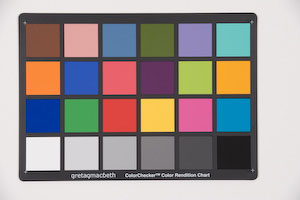
which is actually rather large for use by Imatest, but it doesn't cause any problems on a fast 2 Gb PC. Hopefully, at f/11 vignetting would be small.
Up to Nikon D3 index | Up to Canon 5D index | Up to Canon 1DsII index
The gretagmacbeth ColorChecker™ chart was photographed using the respective professional grade 70-200mm f/2.8 lenses set at 116mm and f/11. The cameras were allowed to set their own shutter speeds using matrix metering for the D3 and centre-weighted average metering for the Canons. Mirror lock up was used for the Canons but not for the D3 (because it cannot be used together with the self timer). The cameras were mounted on a sturdy tripod at a distance of 1.5m from the target. Autofocussing was used initially.
This was done for ISO values between 200 and 25,600 for the D3 and ISO 200 to 3200 for the Canons. Note that ISO 200 is the base ISO of the D3, whereas for the Canons the base ISO is 100. Thus, although below we directly compare the cameras at the same ISO setting, which is perfectly reasonable from a photographic point of view, the Canons at ISO 200 are working above their base speed.
The framing of the chart was like this

which is actually rather large for use by Imatest, but it doesn't cause any problems on a fast 2 Gb PC. Hopefully,
at f/11 vignetting would be small.
The resulting raw files were converted to 16-bits per channel TIFFs in AdobeRGB colour space using Adobe Camera Raw. The ACR point curve was set to "linear", sharpening and luminance and chroma noise reduction to zero, white balance to "as shot" and all other ACR settings left at their default values. Camera calibration was "ACR 4.3" for the D3 and "ACR 3.3" for the 5D: I did not have a choice about that.(Raw conversion using dcraw driven by Imatest, the most obvious option to use, was attempted but found to be problematic in that dcraw applies an unwanted auto-exposure correction. Hence ACR was used.)
Imatest then produced its normal Colorcheck analysis - which please refer to for the interpetation of these results.
The Imatest output figures are given below for ISO 200 for the D3 (left) and for the 5D (right). You should see two similar graphs side by side. If not, use widest possible browser window. Either graph can be switched to the Canon EOS 1Ds mark II using the buttons above it. When comparing graphs please note that the vertical scales sometimes differ.
Imatest figure 1: Gray patch tone and noise analysis
Choose either of |
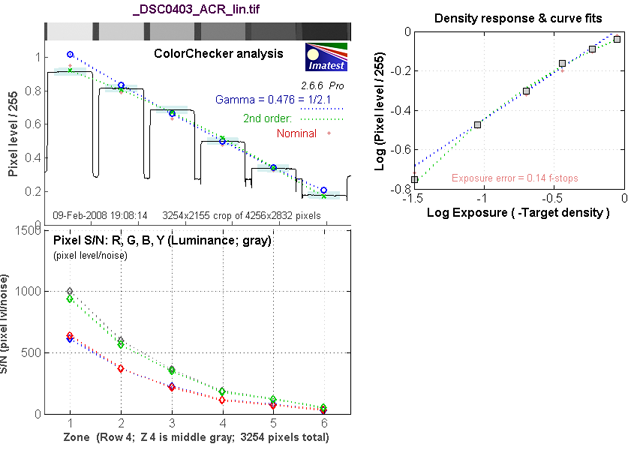 |
Choose either of |
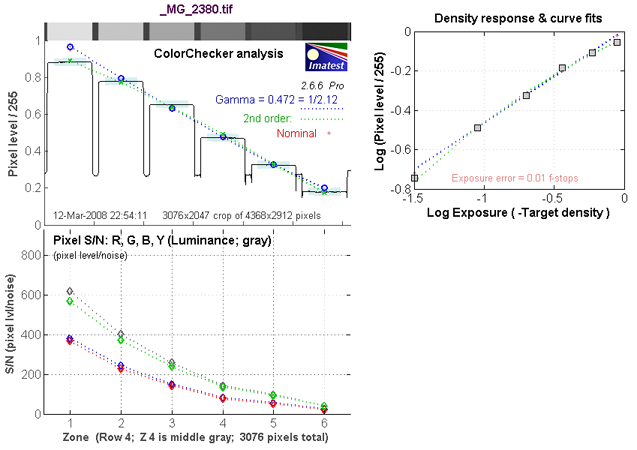 |
Looking at the bottom left graphs, it can be seen that the signal to noise ratio of the D3 on the grey patches is about 40% better than that of the 5D in all three colours and luminance. The 1Ds mark II is slightly worse than the 5D.
Imatest figure 2: Colorcheck noise detail
Choose either of |
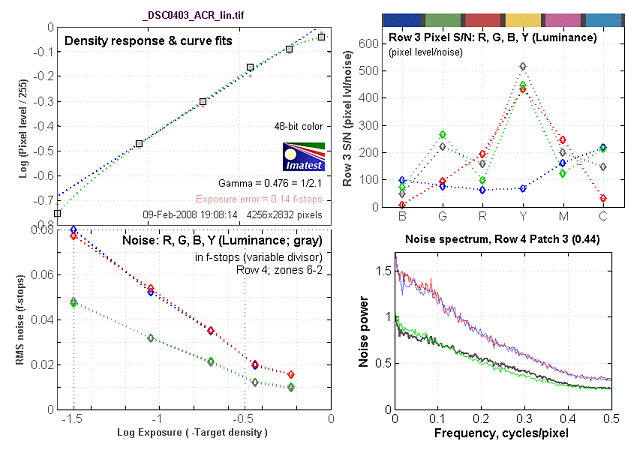 |
Choose either of |
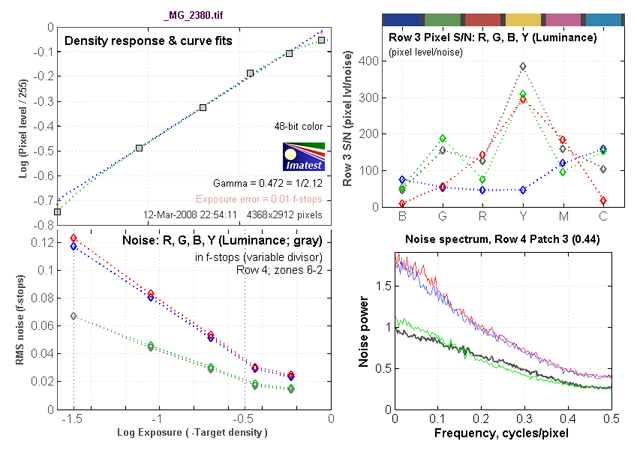 |
Apart from the improved signal to noise ratio already noted, these graphs are pretty similar. All three cameras show their best noise performance on the yellow patch.
The noise spectra (bottom right graphs) for the D3 and 5D are very similar except that the 5D shows slightly more low frequency noise in the red channel. The 1Ds mark II has slightly lower low frequency noise in the blue. The D3 has less low frequency noise in the red and blue than the Canons. The D3 has no noticeable cut in high frequency noise compared with the Canons, such as one might expect if in-camera noise reduction were being applied to the raw.
Imatest figure 3: a*b*D65 color error
Choose either of |
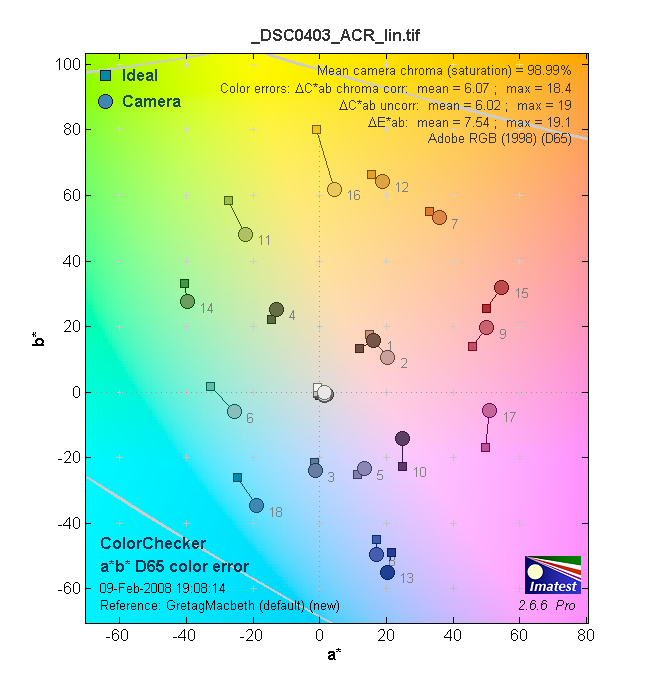 |
Choose either of |
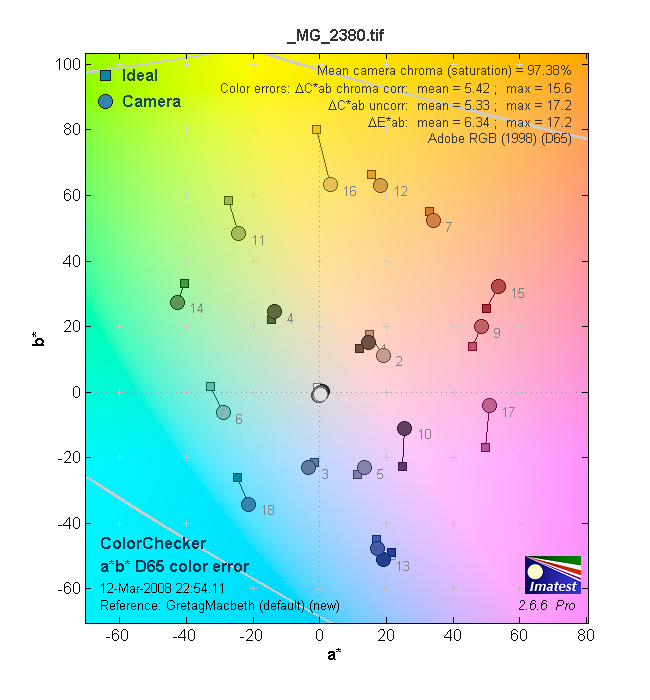 |
Colour accuracy is the one area where the 5D just beats the D3. Both the maximum and mean errors are slightly lower for the 5D. Colour saturation is slightly higher for the D3. The 1Ds mark II is better than the D3 but worse than the 5D. There is not much in it though.
Imatest figure 4: Color analysis
Choose either of |
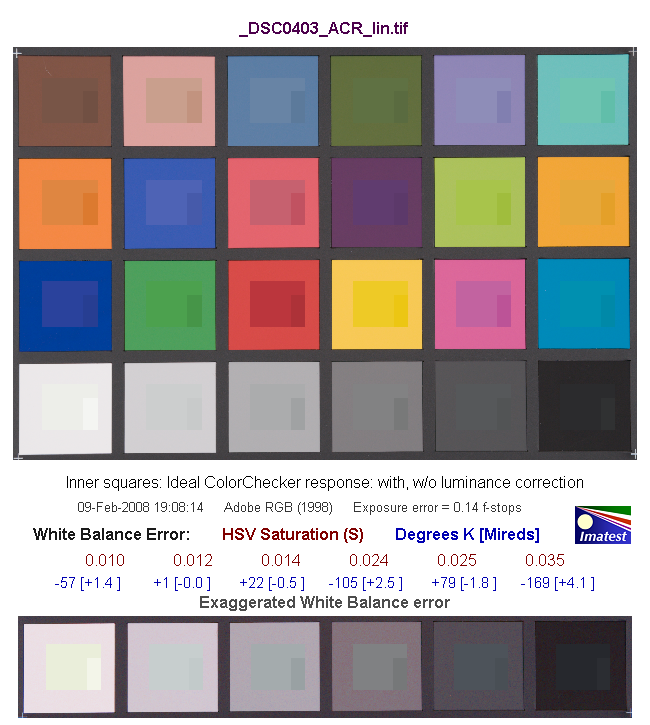 |
Choose either of |
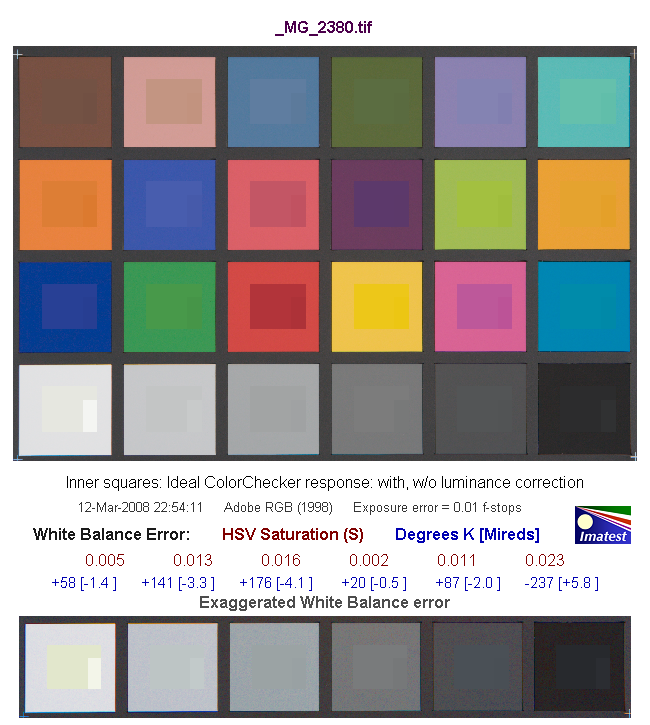 |
Both the Canons are slighlty closer to the ideal ColorChecker response than the D3, especially without luminance correction. There are differences between the 5D and the 1Ds mark II but it seems to be six of one and half a dozen of the other.
Although the white balance error is very small for all three cameras, when exaggerated by Imatest (bottom line) the D3's balance appears excessively warm.
The Imatest output figures are given below for ISO 3200. This is a normal speed for the Nikon but for the Canons it is the highest speed they offer and is only available when the "extended ISO" custom function is enabled. You should see two similar graphs side by side. If not, use widest possible browser window.
Imatest figure 1: Gray patch tone and noise analysis
Choose either of |
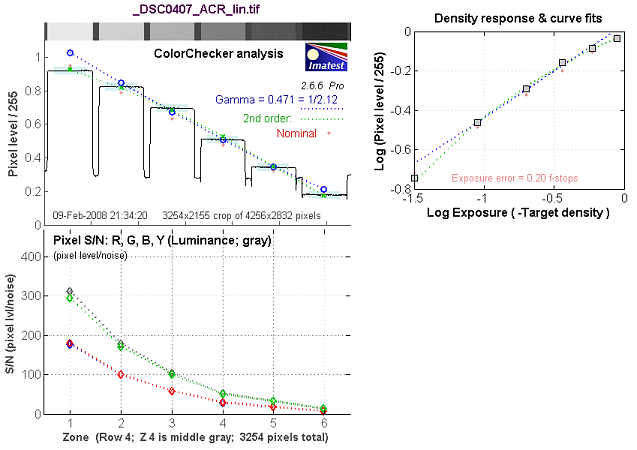 |
Choose either of |
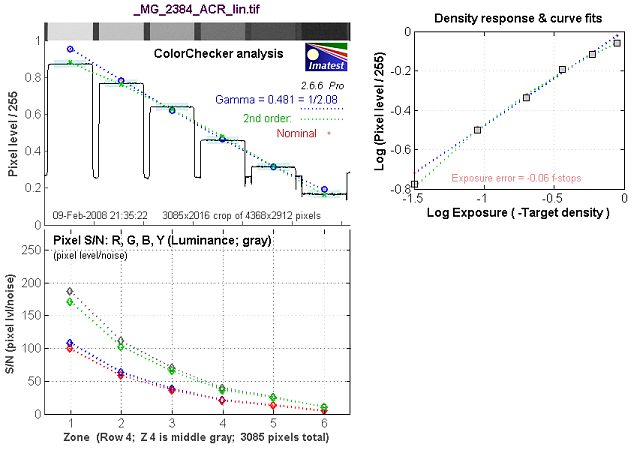 |
The D3 maintains its lead over the Canons, and the 5D continues to be better than the 1DsII.
Imatest figure 2: Colorcheck noise detail
Choose either of |
 |
Choose either of |
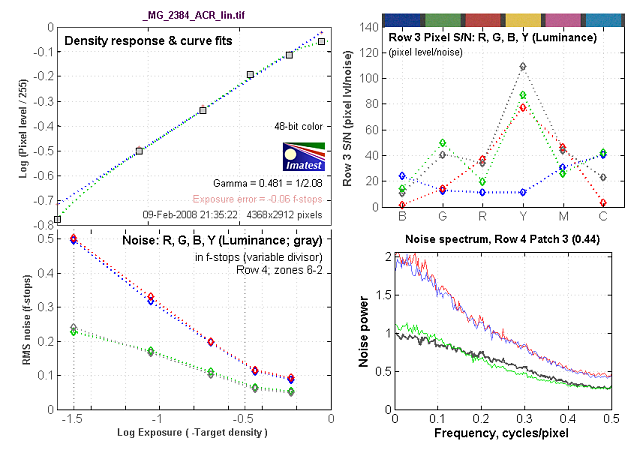 |
Imatest figure 3: a*b*D65 color error
Choose either of |
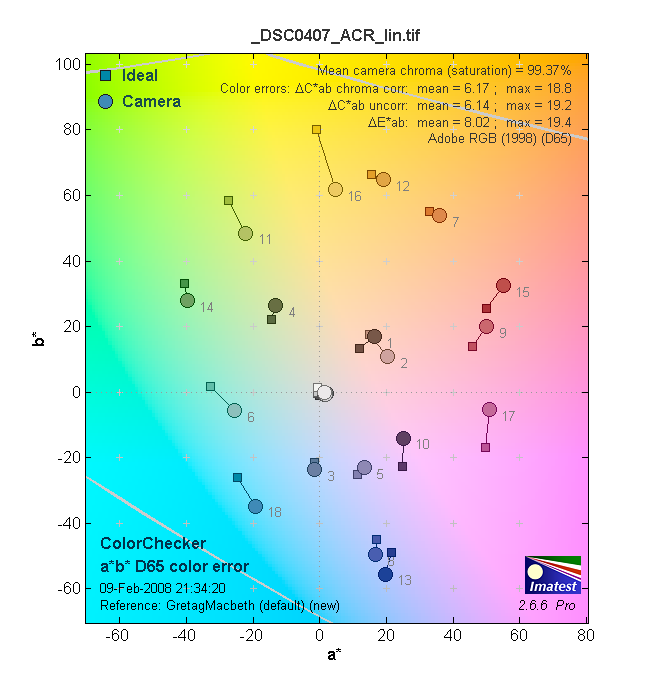 |
Choose either of |
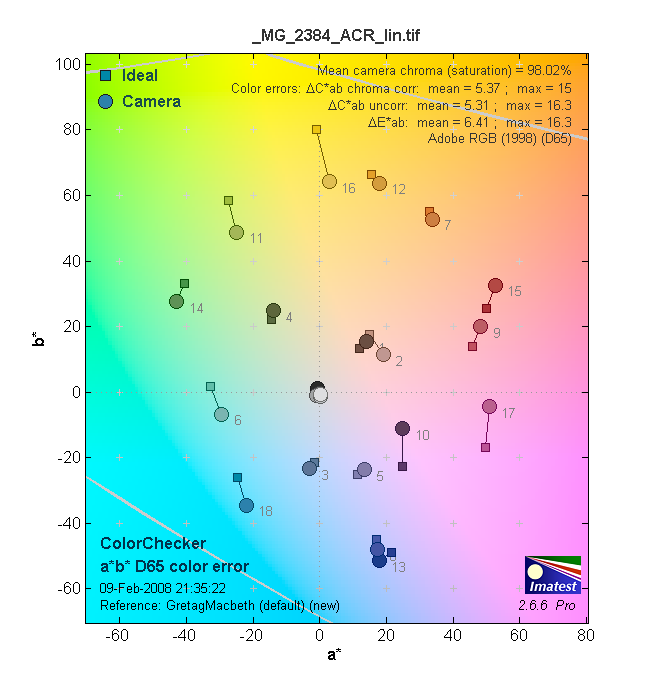 |
Imatest figure 4: Color analysis
Choose either of |
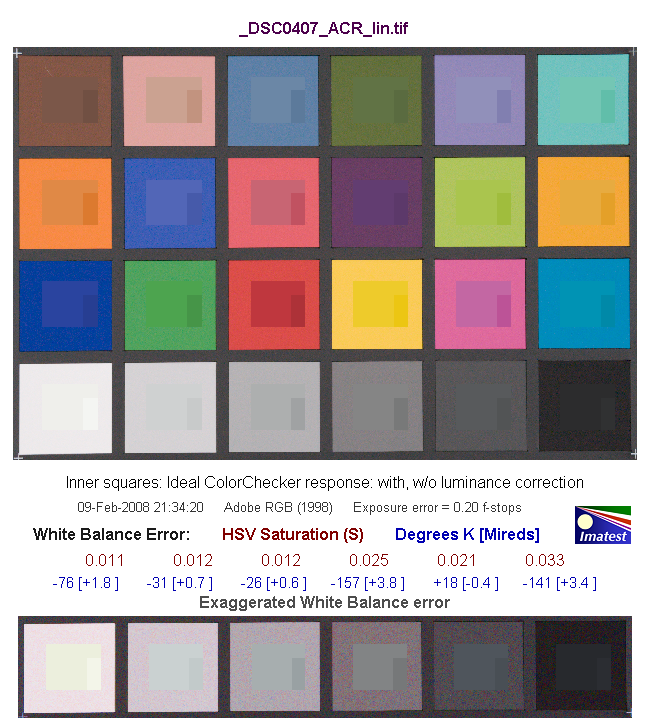 |
Choose either of |
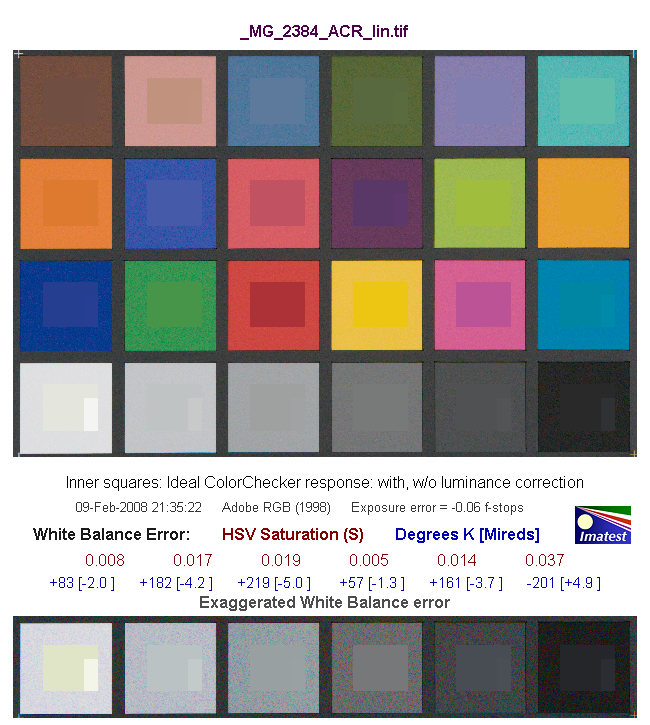 |
Although Figure 1 above shows that at this speed the D3 still has 40% better signal to noise ratio on the grey patches, to my eyes (looking at the fourth row down in Figure 4 above), the 5D noise at ISO 3200 looks very similar. The lower noise of the 5D compared to the 1DsII is quite noticeable.
The Imatest output figures are given below for ISO 25,600. This is way above the top speed of the Canons so no comparisons are offered.
Imatest figure 1: Gray patch tone and noise analysis
| Nikon D3 at ISO 25,600 |
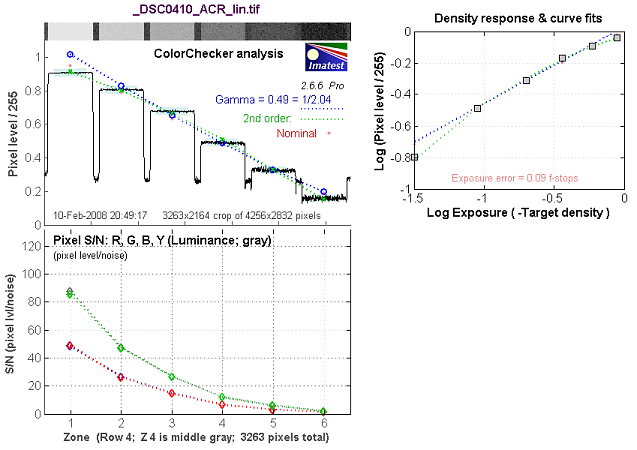 |
Imatest figure 2: Colorcheck noise detail
| Nikon D3 at ISO 25,600 |
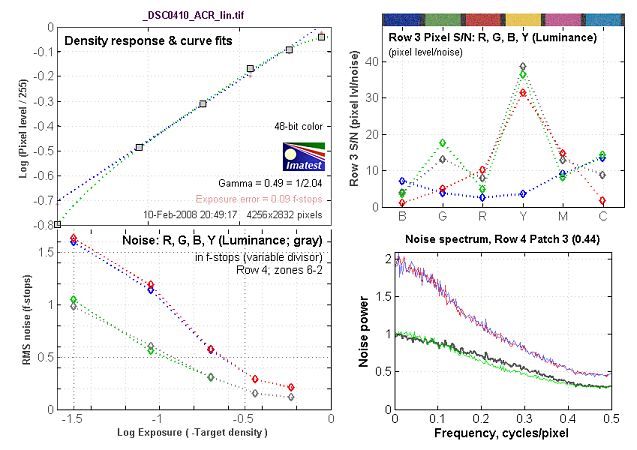 |
Imatest figure 3: a*b*D65 color error
| Nikon D3 at ISO 25,600 |
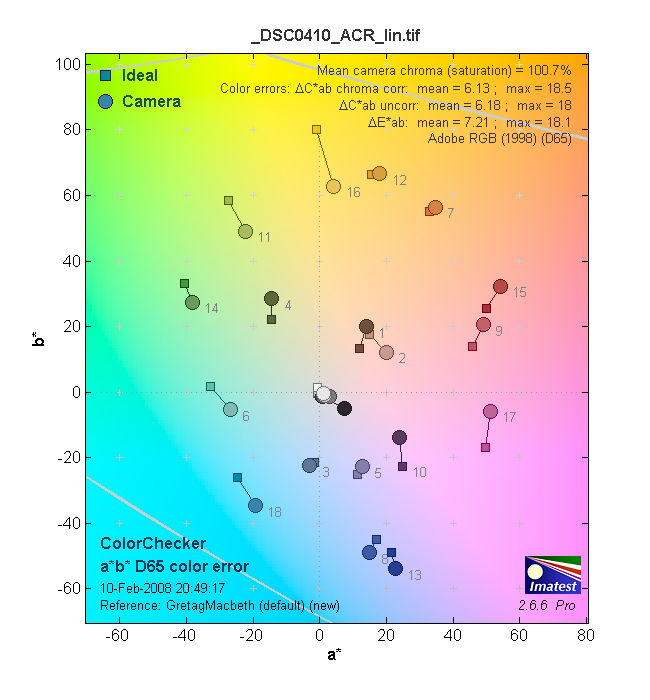 |
Imatest figure 4: Color analysis
| Nikon D3 at ISO 25,600 |
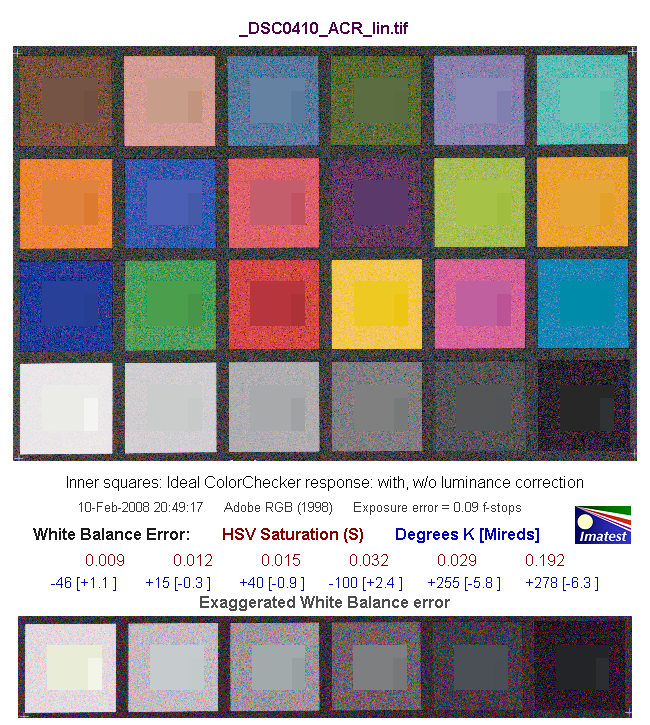 |
The original raw (NEF) files on which this test is based may be downloaded here. Please note that each file is 13 to 19 megabytes in size, and the whole lot amount to around 130 megabytes, so you'd have to be really keen to try it.
I'd appreciate a reference to this work if you publish anything based on these files.
You won't see the file list below unless you have Javascript enabled. Right click and SAVE AS (note that, despite what Internet Explorer might say, these files are .NEF not .TIF):-
filelist.csvNEF files no longer on server. Email me if you want them.
Peter Facey, Winchester, England
20131125 Data files removed from server
20080313 results for 1DsII added
20080217 minor addition
20080214 downloads for .NEF files added
20080209 major rewrite using new data
20080127 originated